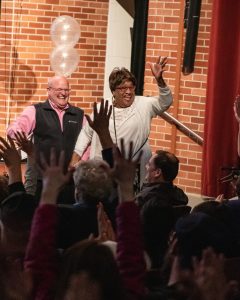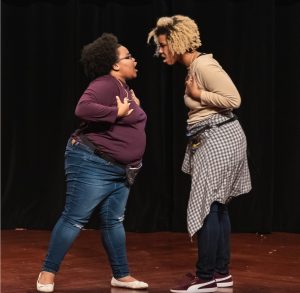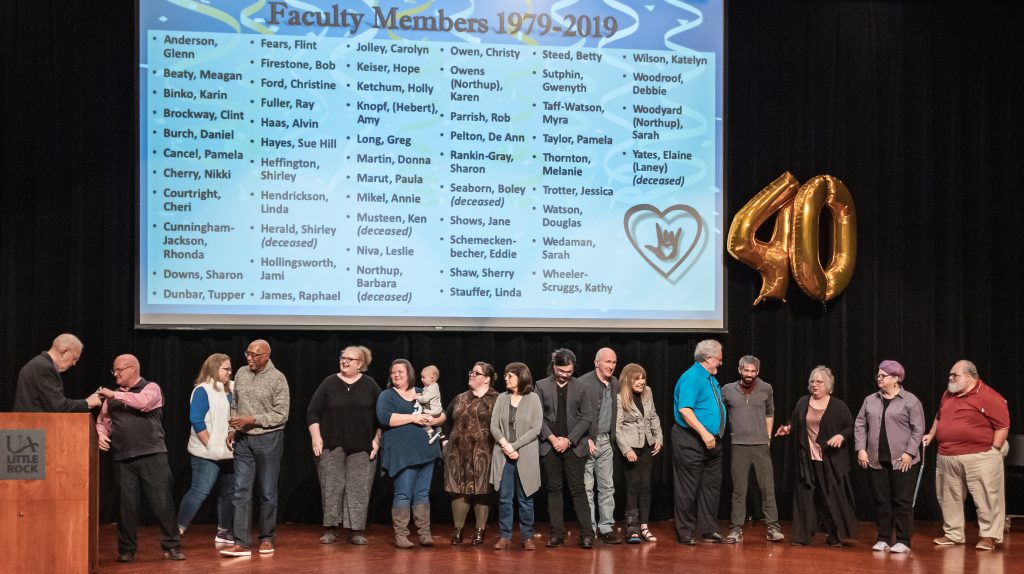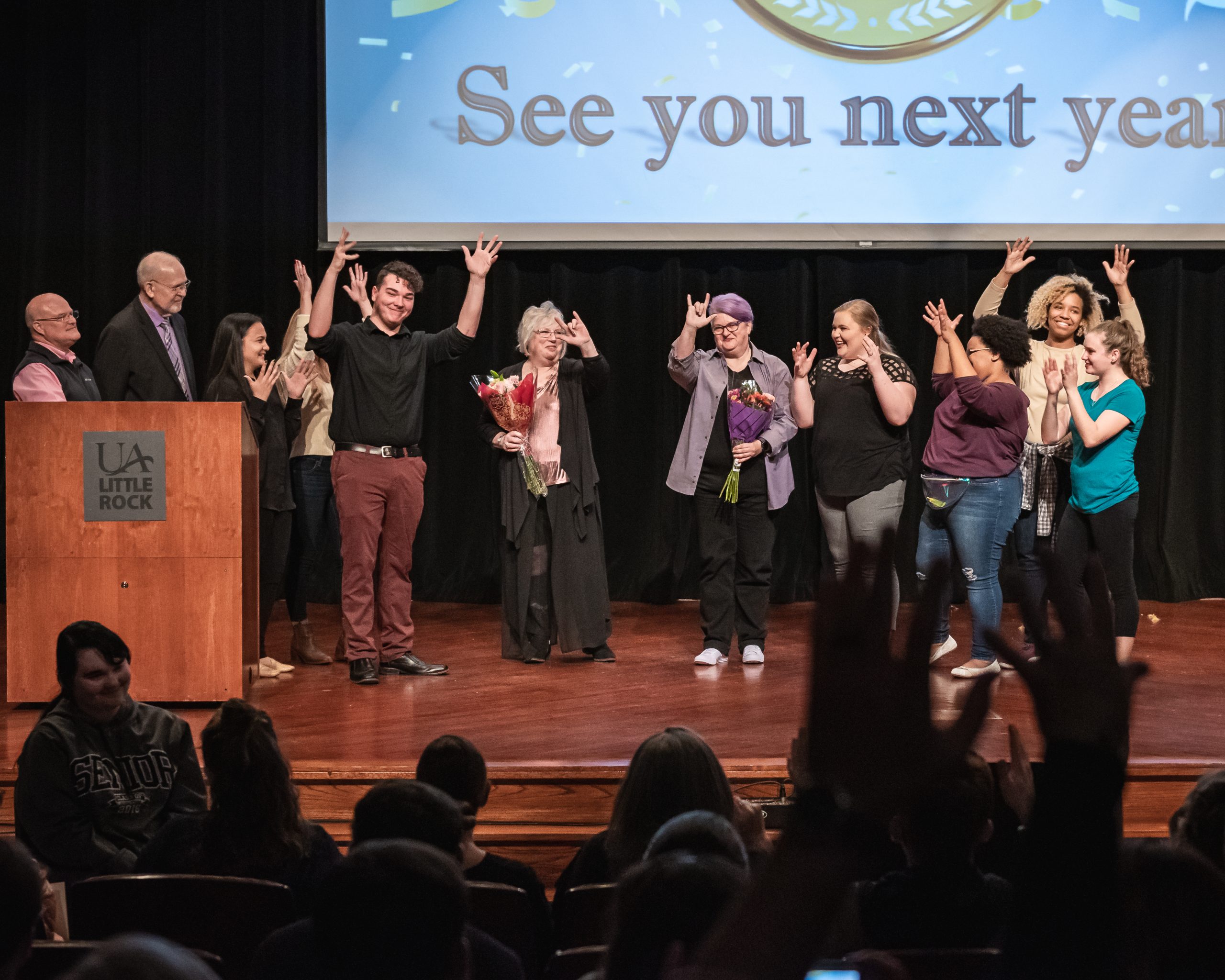40th anniversary of ‘See-a-Song’ joins communities, celebrates success, inspires the continuing pursuit of access and quality interactions
The University of Arkansas at Little Rock Interpreter Education Program celebrated its 40th anniversary Nov. 16 with a special edition of “See-a-Song,” a public performance of songs presented in sign language.
Deaf community member Ernest Northrup and former faculty member Eddie Schmeckenbecher emceed the celebration before a full house of students and community members in the Stella Boyle Smith Concert Hall. Interpretation was provided by Beth Smith and Katie Becker of Communication Plus+ Interpreting Services.
“I would love to give you all my appreciation for keeping the Interpreter Education Program going,” Schmeckenbecher said. “Keep it up and we’ll all come back and do this again in 40 more years!”
Former and present program faculty were presented certificates of appreciation in recognition of their outstanding contributions to the program. Special recognition was given to program coordinators Daniel Burch (1979-1981), Mindy Hooper (1981-1982), Myra Taff-Watson (1982-2004), Dr. Sherry Shaw (2004-2007), and Dr. Linda Stauffer (2007-present).
“Mama Ella” Irby was honored for her 20 years of service in the ASL (American Sign Language) lab, while Jackie Stubblefield, class of ‘86, was honored as the first person of color to graduate from the program.

“For me, what’s important is that many wonderful people throughout the decades have built up this program to do right by the communities and create a legacy of qualified interpreters,” said ASL major Madisyn Turner. “It is fun and rewarding to be able to talk with the community in a way that creates quality interactions.”
Since 1979, UA Little Rock’s interpreter program has been developing professionals who provide linguistic and cultural facilitation between individuals who are hearing and individuals who are deaf, deaf-blind, or hard of hearing.
“I started studying ASL because I find the language to be intriguing,” said ASL major Libby Williams. “But really, it’s all about access. To be able to put on a performance like See-a-Song that grants access to cultural experience is very rewarding.”
Northrup stressed the importance of continuing to train future generations of interpreters.
“We need interpreters in our hospitals and doctor offices, in our schools, and in our communities,” Northup said. “I see many of you that are here tonight out in the community working as graduates of this program. Thank you.”
ASL major Cora Majan shared her perspective and appreciation for the program.
“I really love the interpreter program,” Majan said. “It’s a great culture to immerse yourself in and teaches you a lot. There are only 13 accredited bachelor’s programs in the country, and we are lucky to have one of those programs here in Little Rock.”

In total, 18 songs were performed through artistic interpretation. UA Little Rock See-a-Song student performers included Turner, Williams, Majan, Christy Bacon, Levi Boyd, Ashleigh Chatfield, Bethani DeAscentis, Oksana Durkee, Maria Huntley, Aaron Johnson, Scarlett Quick, Emili Towater, and Clayton Williams. Schmeckenbecher and senior instructor Jami Hollingsworth also performed.
Four Tulsa Community College students traveled from Oklahoma to perform in See-a-Song. Brooke Blackmon, Shannon Erwin, Megan James, and Dana Kerbo are participating in the Interpreter Education Program at UA Little Rock.
The UA Little Rock Interpreter Education Program established a partnership with Tulsa Community College in 2008. Students who earn an associate degree in interpretation can pursue a bachelor’s degree from UA Little Rock via a hybrid model of distance education. Twenty-five students from Oklahoma have graduated with a bachelor’s degree since the joint partnership began. Five more will graduate spring 2020.
“This distance model of interpretation affords AA graduates from the Interpreting Program in Tulsa the opportunity to further their education with a bachelor’s degree from UA Little Rock, something that is not available in Oklahoma,” Program Coordinator Linda Stauffer said. “A bachelor’s degree is required for national certification.”
Since 1979, UA Little Rock has produced a total of 503 interpreters for individuals who are deaf, deaf-blind, or hard of hearing. Four students will graduate this December and another five in May 2020.

